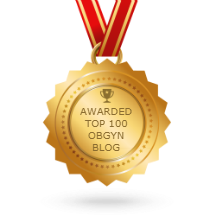Now that the temperatures are dropping and the outdoors is frosty, there are a few cold weather tips you need for working out outside.
- Chose safe routes. Avoid iced over rivers of uncertain stability. Winter roads can be icy. One winter run of mine a few years ago landed me in a CT scanner, since I slipped, fell and hit my head on the ice. All was well, but it was no fun and showcased my imprudence to all my friends in the emergency room. Plowed roads or snowpack can work well, but you still have to be on your guard for black ice. Despite your best efforts, you may fall and injure yourself, so always carry your cell phone or go with a buddy. Some have suggested a loop close to home so you are are never far if you have to limp back.
- In your first excursions of the cold season, go for less time than you usually do, to see how you adapt. You can always work up gradually later. This is especially good advice if you have asthma or other medical conditions.
- Don’t forget sunscreen, especially in bright snow white conditions. Likewise wear appropriate eye protection for sun, snow and ice .
- Warm up and cool down as always. However, in the case of cold weather, do it inside.
- Dress in layers, so you can stay warm but not overheat and sweat too much. Start with a wicking layer, followed by insulation, and then a shell. Always include a hat, which adds warmth without bulk and can help prevent frostbitten ears if it has earflaps. Consider a neck gaiter to keep the mouth and nose warm. Absolutely wear gloves to prevent frostbite.
- Check the forecast before you go, factoring in not only temperature but precipitation and windchill. Tell someone where you are going and when.
- Have an indoors workout alternative if it is just too challenging out of doors, preferably an indoor alternative at home, such as a workout DVD you can do in your living room or basement.
- Do not mix alcohol with any workout. Be aware that alcohol degrades decision making, and masks symptoms of hypothermia.
- Know and recognize the symptoms of frostbite, whiteness, tingling and pain. Know, recognize and heed the signs and symptoms of hypothermia: shivering, confusion, fatigue and slurred speech. Hypothermia is medical emergency and must be corrected right away.
- Avoid cold weather exercise in the face of dehydration, inadequate calories or sleep deprivation. These can limit your bodies ability to thermoregulate.
Working out outdoors in the winter requires extra preparation and mindfulness. However, there are some major benefits: Winter workouts produces a bigger endorphin boost than working out in warm weather. You burn more calories in the winter and train a bit harder. And it is invigorating to be out in the weather, and the landscape is often stunningly beautiful. Getting outside in the winter is important for fitness, but it also improves attitude and mood as well. All in all, is it something you should add to this season’s workout mix.




























